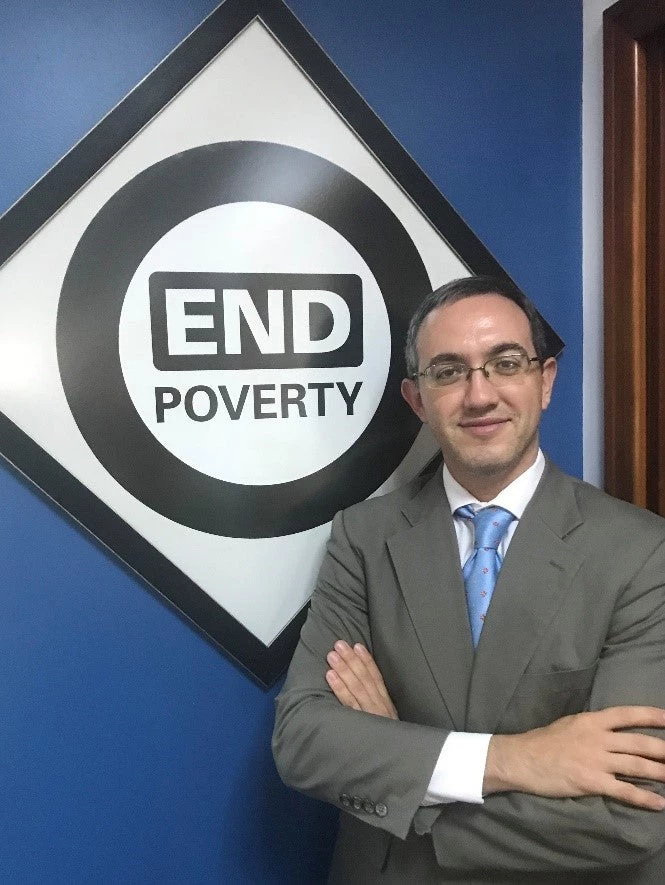
As in many other developing countries, Tanzania’s rural residents depend heavily on low-volume roads to reach jobs, services, markets, and go about their daily lives. The transport network was conceived primarily to accommodate cars and truck when, ironically, most road users in these areas do not own a vehicle. As a result, the design of rural roads often neglects important day-to-day users, such as girls and boys walking to school, patients trying to get to a clinic, or small farmer holders transporting goods on bicycles and motorbikes. Women are particularly impacted by the situation, along with many other vulnerable user categories who don’t typically have access to motorized transport.
The consequences of unsafe, inadequate transport can be severe. For seven years, Nickson crossed the Tanzania-Zambia highway several times every day until he got hit by a car while returning home from school, causing severe damage to his leg. After the accident, Nickson’s performance at school dropped significantly due to the amount of time spent in the hospital and at home nursing his wounds. His mother, Jane, had to adjust as well. She stayed home to take care of Nickson and was not able to do any farm work, a situation that caused serious financial stress on the family. Nickson’s story is just one example of the devastating impacts that poor road design can bring to vulnerable road users, their families, and the entire community.
So, how can we turn this around and build roads that meet the needs of all users—whether they’re moving inside a vehicle, on a bike, or on their own two feet?
In Tanzania, we’re working with the government to develop an inclusive approach to road design that actively engages, includes, and protects all beneficiaries. The objective of this “People-Centered Design approach”(PCD approach) is to ensure rural road programs can work for everyone, placing an important focus on avoiding social and road safety risks. With the PCD approach, vulnerable users are not an afterthought but key factor of the process. The approach combines people-centered technical designs, consultations, and road safety audits. The PCD approach was designed and tested with three rural roads projects in the region of Iringa, Tanzania developed in preparation for the forthcoming Roads to Inclusion and Socio-economic Opportunities Program (RISE) Project.

The People-Centered Design Approach includes the following key elements:
1. Engaging Early: Active Listening Round of Consultations. A first round of consultations starts at the very beginning of the project—before the preliminary design phase—to gather input from the community about the current road context, uses, needs, road safety risks, and perceived social risks during construction including gender-based violence (GBV) and HIV/Aids. These consultations are structured to reach every category of stakeholders and to engage women, men, girls and boys independently, ensuring all voices can be listened to. Ethical and gender considerations were incorporated into the consultation methodology ensuring, for instance, that consultations with women are conducted in safe spaces, by trained female facilitators, during times and days that are suitable for them and that information on service provision for survivors of violence is available if a referral is required. Transport is also facilitated for the different groups, mainly for those with physical disabilities, so that access is not an impediment for them to participate. This first round of consultations informs the preliminary design as well as the environmental and social impact assessment (ESIA) study process.
2. Discussing Design: Second Round of Consultations. Once the preliminary design has been drafted, the team gets back to the project area so the community can have a chance to review and provide feedback on the proposed road improvements. This second round goes beyond conventional consultation practice and is open to all groups previously engaged during the first round of consultations. The team presents the main design features to all residents in a plenary meeting, and then gathers detailed information through focus groups following a similar grouping approach as with the first consultation. For some complicated locations, engagement may also include a discussion on site. The discussions also cover the management of social risks during construction, including GBV, HIV/AIDS or occupational health and safety hazards. Moving forward, consultations are also expected to address health concerns related to COVID-19. The information collected through the second round of consultations is then used to revise the design as needed.

3. People-Centered Road Safety Audits. Two road safety audits are also conducted for each project, one at the preliminary design stage and another one during the final design stage. Drawing on the information collected during the people-centered consultations, the technical audits carefully look at road from the perspective of pedestrians (of whom the majority are women), cyclists, public transport users, and all the different socio-economic groups that stand to benefit from the project. These people-centered road safety audits are implemented combining both desk review and field work along the whole road alignment.

Rural communities currently make up 70% of Tanzania’s population. Safe, reliable transport can play a decisive role in improving their lives and connecting them to opportunity. But in order to realize this vision, we need to move away from the obsolete vehicle-centered approach and, instead, put people at the center of the process. That is precisely the philosophy behind the PCD, which just received an award from the World Bank Infrastructure Vice-Presidency for its innovative approach to road safety and community engagement, with a strong gender angle. We are excited to see the project come to life and are now looking at opportunities to apply PCD principles to other locations. Stay tuned!
Acknowledgements
The PCD approach was conceptualized by Tanzania Rural and Urban Roads Agency (TARURA), Tanzania National Roads Agency (TANROADS) and the World Bank and benefited from the support of the specialized international road safety NGO AMEND for the design and rollout of the consultations. Activities were partially funded through the Corridors for Growth Multi-donor Trust Fund, administered by the World Bank, with funding from UKAid. The authors would like to express their gratitude to World Bank staff and consultants for their inputs to the PCD approach and this blog including Jacob Omondi, Daniel Mira-Salama, Sergio Garcia-Monroy, Maria Jose (May) Sala, Bhavin Bipichandra, Cecilia Escalante, Loy Nabeta and Xavier Muller.



Join the Conversation